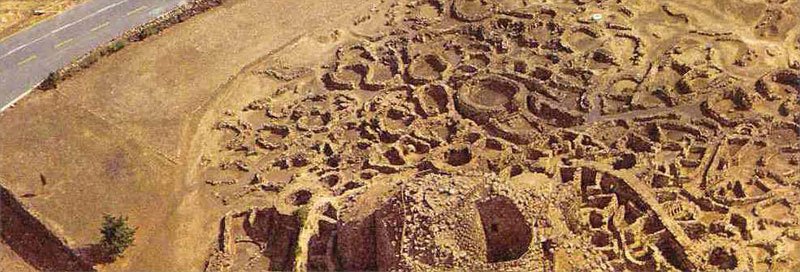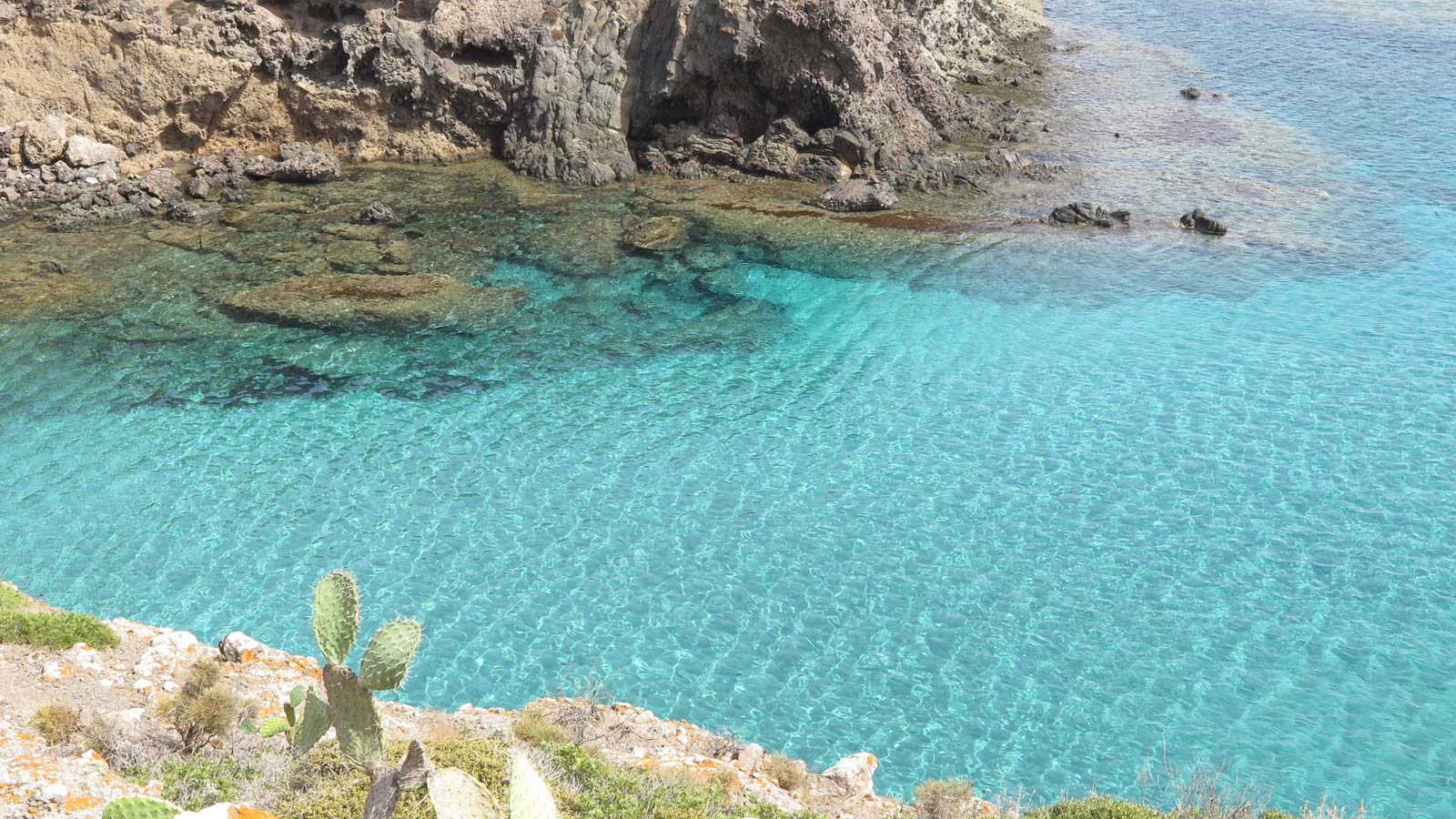Nuraghe di Barumini,

The most important and famous nuraghic archaeological complex in Sardinia is situated approximately 1 km. from Barumini, 65 km. north of Cagliari. The village is located in a clearly strategic position in a central point on the island; this area has numerous nuraghic settlements.
This central settlement dates back to 1100 B.C. and thrived up until the Phoenician and Punic Ages (VIII-VI centuries). It was destroyed by the Carthaginians at the end of the VI century but survived through the Roman Age thanks to some rebuilding.
“Su Nuraxi” includes a main tower and four smaller ones connected to each other by a containing wall which also forms a raised courtyard; the entire complex is protected by another wall and seven towers. Surrounding the Nuraghe, especially on the north side, is the village and its circular, elliptic-shaped huts.
The four building phases
A study of the Nuraghe indicates that there were three building phases that greatly enlarged this centre towards the perimeter.
In the first phase, dating back to the archaic Nuraghic Period (1100-1050 B.C.), the main tower rose with three overlapping rooms covered by a pseudo-dome. Large rows of stones jut out and were connected by a ramp of spiral stairs obtained with the wall’s thickness.
In the second phase (end of the IX century, first half of the VIII century), a quadrilobate bastion with towers was added to this primitive nucleus. Its single cell contained two rows of overlapping loopholes united by straight walls. The shortest one faced southeast and had an open entrance that was defended by two guardsmen. In the courtyard which was raised approximately 15 m from the ground and which served to circulate air throughout the complex and as a passageway between areas on different levels, a well over 20 m deep was dug; it served to refurbish the complex with water in the event it was besieged.
More decisive were the innovations relative to the third construction phase (early nuraghic, second half of the VIII century-end of VI century). During this period, which corresponds to the height of nuraghic civilisation, the four towers and connecting walls were reinforced with a binding wall three meters thick that blocked the cells’ loopholes and the southeast entrance. The entrance was moved to the northeast wall and elevated off the ground resulting in its access by a mobile stairway. The main towers’ and four lateral towers’ terraces were enlarged and hung out over large basaltic shelves thus permitting the construction of a valid defence mechanism; the machicolation system which consisted in dropping large rocks on the assailants.
During the last phase, Punic-Roman – from the III to the I century B.C., the dwellings are reconstructed reducing the previous areas and using for the most part the oldest constructions. During this period, along with utensils typical of the nuraghic world, imported objects appear.
• bell-shaped ceramics painted black
• Greek-Punic terracotta
• Punic and Roman Republic coins
These objects are probably the result of the intermingling of the local people with the Carthaginian, Iberian and Libyan-Phoenician mercenaries rather than the outcome of external commerce. Large part of the objects found in Barumini is conserved in Cagliari’s Archaeological Museum.
Barumini’s excavation site has also become a model for other nuraghic centres.






